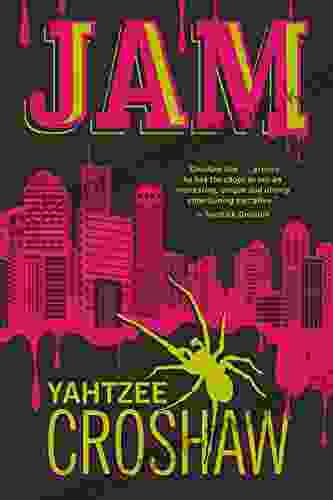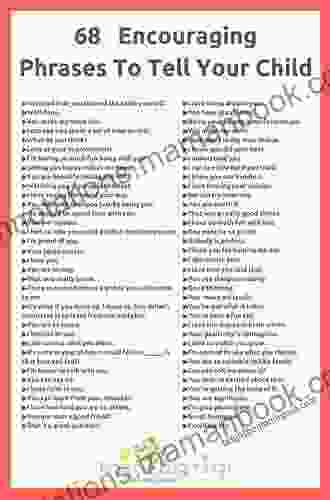80 Practical Projects for Creating a Self-Sustaining Garden Ecosystem

Creating a self-sustaining garden ecosystem is a rewarding and challenging endeavor. It requires careful planning and execution, but the benefits are well worth the effort. A self-sustaining garden can provide you with fresh, healthy food all year long, while also benefiting the environment and local wildlife.
4.7 out of 5
| Language | : | English |
| File size | : | 46586 KB |
| Text-to-Speech | : | Enabled |
| Enhanced typesetting | : | Enabled |
| Print length | : | 403 pages |
| Screen Reader | : | Supported |
If you're interested in creating a self-sustaining garden ecosystem, there are a number of projects you can undertake. Here are 80 ideas to get you started:
1. Build raised beds
Raised beds are a great way to improve drainage and soil quality in your garden. They also make it easier to control pests and diseases. To build raised beds, you can use wood, stone, or brick.
2. Compost
Composting is a natural way to recycle organic matter and create nutrient-rich soil for your garden. You can compost kitchen scraps, yard waste, and even paper products.
3. Attract beneficial insects
Beneficial insects, such as ladybugs and lacewings, can help to control pests in your garden. You can attract these insects by planting flowers that they like, such as sunflowers and zinnias.
4. Provide habitat for wildlife
Wildlife, such as birds and frogs, can help to control pests and pollinate your plants. You can provide habitat for wildlife by planting native plants, building birdhouses, and creating a pond.
5. Use mulches
Mulches, such as straw and wood chips, can help to retain moisture in the soil, suppress weeds, and regulate soil temperature. They can also provide a habitat for beneficial insects.
6. Practice crop rotation
Crop rotation is a practice of planting different types of plants in the same area each year. This helps to prevent soil depletion and reduce the risk of pests and diseases.
7. Interplant
Interplanting is a technique of planting different types of plants together in the same bed. This helps to make the most of space and can also improve the growth of both plants.
8. Use companion planting
Companion planting is a technique of planting different types of plants together that benefit each other. For example, you can plant tomatoes with basil, which helps to repel insects.
9. Build a greenhouse
A greenhouse can extend your growing season and allow you to grow plants that are not native to your climate. You can build a greenhouse out of a variety of materials, such as wood, plastic, or glass.
10. Collect rainwater
Rainwater harvesting is a great way to conserve water and reduce your environmental impact. You can collect rainwater in a variety of ways, such as using a rain barrel or a cistern.
11. Use solar power
Solar power is a clean and renewable energy source that can be used to power your garden tools and appliances. You can install solar panels on your roof or in your yard.
12. Build a chicken coop
Chickens are a great way to add fresh eggs to your diet and they can also help to control pests in your garden. You can build a chicken coop out of a variety of materials, such as wood, wire, and metal.
13. Build a beehive
Bees are essential pollinators for many plants. You can build a beehive out of a variety of materials, such as wood, straw, and clay.
14. Create a butterfly garden
Butterflies are beautiful and beneficial insects. You can attract butterflies to your garden by planting flowers that they like, such as milkweed and sunflowers.
15. Build a pond
A pond can provide habitat for a variety of wildlife, such as frogs, toads, and dragonflies. It can also be a beautiful addition to your garden.
16. Plant a food forest
A food forest is a sustainable ecosystem that mimics the natural forest. It is designed to provide food, shelter, and other resources for humans and wildlife.
17. Install a drip irrigation system
A drip irrigation system can help to conserve water and deliver water directly to the roots of your plants. You can install a drip irrigation system using a variety of materials, such as tubing, emitters, and timers.
18. Use organic fertilizers
Organic fertilizers, such as compost and manure, can help to improve the health of your soil and plants. They are also more environmentally friendly than synthetic fertilizers.
19. Practice no-till gardening
No-till gardening is a method of gardening that does not involve tilling the soil. This helps to preserve the soil structure and reduce erosion.
20. Use cover crops
Cover crops are plants that are grown to cover the soil and protect it from erosion. They can also help to improve the soil
4.7 out of 5
| Language | : | English |
| File size | : | 46586 KB |
| Text-to-Speech | : | Enabled |
| Enhanced typesetting | : | Enabled |
| Print length | : | 403 pages |
| Screen Reader | : | Supported |
Do you want to contribute by writing guest posts on this blog?
Please contact us and send us a resume of previous articles that you have written.
 Top Book
Top Book Novel
Novel Fiction
Fiction Nonfiction
Nonfiction Literature
Literature Paperback
Paperback Hardcover
Hardcover E-book
E-book Audiobook
Audiobook Bestseller
Bestseller Classic
Classic Mystery
Mystery Thriller
Thriller Romance
Romance Fantasy
Fantasy Science Fiction
Science Fiction Biography
Biography Memoir
Memoir Autobiography
Autobiography Poetry
Poetry Drama
Drama Historical Fiction
Historical Fiction Self-help
Self-help Young Adult
Young Adult Childrens Books
Childrens Books Graphic Novel
Graphic Novel Anthology
Anthology Series
Series Encyclopedia
Encyclopedia Reference
Reference Guidebook
Guidebook Textbook
Textbook Workbook
Workbook Journal
Journal Diary
Diary Manuscript
Manuscript Folio
Folio Pulp Fiction
Pulp Fiction Short Stories
Short Stories Fairy Tales
Fairy Tales Fables
Fables Mythology
Mythology Philosophy
Philosophy Religion
Religion Spirituality
Spirituality Essays
Essays Critique
Critique Commentary
Commentary Glossary
Glossary Bibliography
Bibliography Index
Index Table of Contents
Table of Contents Preface
Preface Introduction
Introduction Foreword
Foreword Afterword
Afterword Appendices
Appendices Annotations
Annotations Footnotes
Footnotes Epilogue
Epilogue Prologue
Prologue Andrew Brooks
Andrew Brooks Mary Turzillo
Mary Turzillo Gennaro Carrano
Gennaro Carrano Louise Derman Sparks
Louise Derman Sparks Natalie Jenner
Natalie Jenner Michael Watkins
Michael Watkins R J Michaels
R J Michaels Kass Mcgann
Kass Mcgann Poppy Cooper
Poppy Cooper Wynn Anne Rossi
Wynn Anne Rossi Mary Ellen Taylor
Mary Ellen Taylor Bryce Ross
Bryce Ross Crystal Daniels
Crystal Daniels Jennifer Hu
Jennifer Hu Billy Waugh
Billy Waugh Danai Krokou
Danai Krokou Paula Kay
Paula Kay Gemma Bray
Gemma Bray Chauncey Canfield
Chauncey Canfield Thomas R Harvey
Thomas R Harvey
Light bulbAdvertise smarter! Our strategic ad space ensures maximum exposure. Reserve your spot today!

 Hector BlairSpecial Forces and CIA Ground Soldier: A Fifty-Year Career Hunting America's...
Hector BlairSpecial Forces and CIA Ground Soldier: A Fifty-Year Career Hunting America's...
 Joel MitchellUnveiling the Horrors of Colonialism: A Review of Graeme Davis's "Colonial...
Joel MitchellUnveiling the Horrors of Colonialism: A Review of Graeme Davis's "Colonial...
 Fletcher MitchellBalancing Your Body Energies for Optimal Health, Joy, and Vitality: An...
Fletcher MitchellBalancing Your Body Energies for Optimal Health, Joy, and Vitality: An... Nikolai GogolFollow ·17.9k
Nikolai GogolFollow ·17.9k Rudyard KiplingFollow ·4.3k
Rudyard KiplingFollow ·4.3k Wayne CarterFollow ·13.3k
Wayne CarterFollow ·13.3k Nathan ReedFollow ·4k
Nathan ReedFollow ·4k Darren BlairFollow ·6.5k
Darren BlairFollow ·6.5k Felix HayesFollow ·3.1k
Felix HayesFollow ·3.1k Colby CoxFollow ·18.8k
Colby CoxFollow ·18.8k Enrique BlairFollow ·7.5k
Enrique BlairFollow ·7.5k

 Nick Turner
Nick TurnerBeethoven's Early Chamber Music: A Listening Guide
Ludwig van Beethoven's early...

 Clarence Mitchell
Clarence MitchellJam Yahtzee Croshaw: The Enigma Behind the Beloved Board...
In the realm of board games, where dice roll...

 F. Scott Fitzgerald
F. Scott FitzgeraldTeacher Research on Language and Literacy: Practitioner...
In an ever-evolving educational landscape,...

 Alec Hayes
Alec HayesThe New Leadership Challenge: Creating the Future of...
The nursing profession is facing a number of...

 Felix Hayes
Felix HayesPrepare for Intrigue and Suspense: A Comprehensive Dive...
Step into the captivating world...
4.7 out of 5
| Language | : | English |
| File size | : | 46586 KB |
| Text-to-Speech | : | Enabled |
| Enhanced typesetting | : | Enabled |
| Print length | : | 403 pages |
| Screen Reader | : | Supported |








